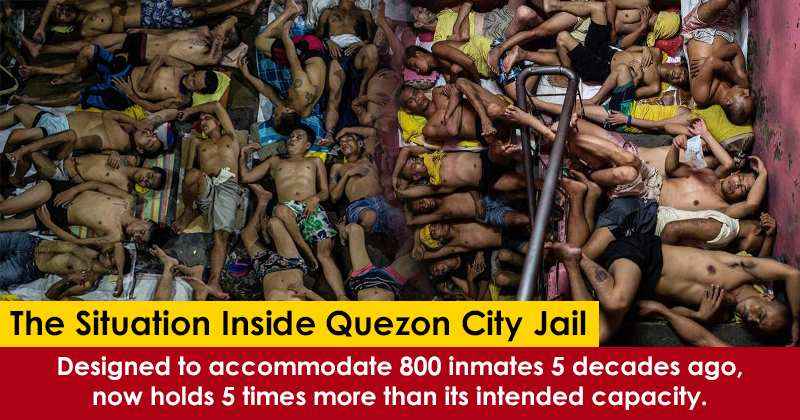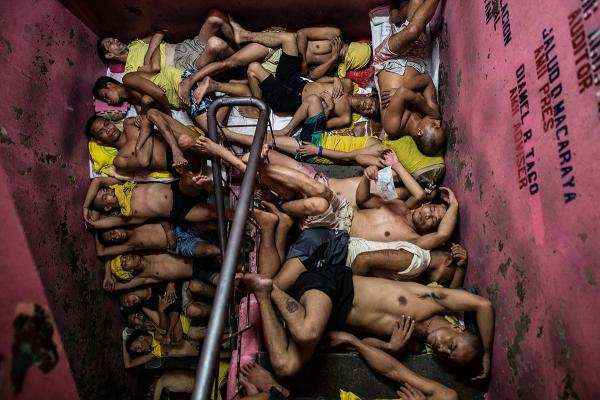05 Aug Inside Quezon City Jail: Built 5 Decades Ago to Accommodate 800 Prisoners, Today it Houses 3,800 Inmates
On July 2016, Noel Celis, a photographer of Agence France-Presse, visited one of the world’s most crowded prisons. He found one of the numerous jam-packed prisons here in the Philippines, the Quezon City Jail.
The jail is originally made 5 decades ago for inmates that are waiting for trial and not convicted yet. It was designed to accommodate 800 detainees, but as of today it already holds almost 5 times its allocated number of people to be housed.
Many of them waited for years here to have a court date for their case. He said, “Jails, prison facilities, detention centers have become these holding tanks for people who’ve never had their day in court. The mass surrenders of suspected drug users and dealers are worsening that on an almost exponential level.”
Celis spent several days and nights inside the prison house to mingle with the prisoners and also to get an intimate photograph of their awful situation.
Celis asked the guard if it is okay to capture stills while the inmates are still sleeping. After being approved to take a picture on the inmates, he photographed the sleeping prisoners inside the open basketball court.
He expected to have seen them sleep in the area, but he did not expect to watch them sleeping like sardines. he said, “To go from one place to another, inmates need to stand up to give way.”
The growth of the number of prisoners detained here is almost exponential because of President Duterte’s intensified push to eradicate drugs and criminality in the country.
New prison facilities are being constructed by the government throughout the country to accommodate the surrenderees of the President’s operation “TokHang.”
According to a Twitter post by Andrew Katz, Time Magazine editor, there are already 565,000+ drug personalities who surrendered since President Duterte started his campaign against drugs and criminality.
But not all of these are to be jailed, some are advised first to change their lifestyle. Not complying with the government’s demand will lead in jailing the compromising citizens as a result.
Celis’ advocacy is to raise awareness that indeed there is a need for more prison houses to give space for the already crowded prisons in the Philippines.
He said, “What’s the use of photojournalism if the readers or the world would just appreciate the pictures as art.”
He also added, “If there’s no reaction, it’s either of the two: The photographer is a failure or the world just doesn’t care and the message didn’t get through.”




No Comments